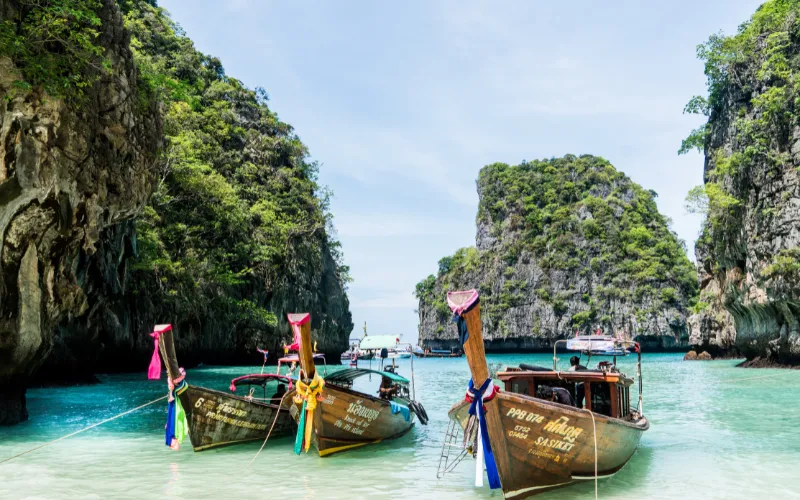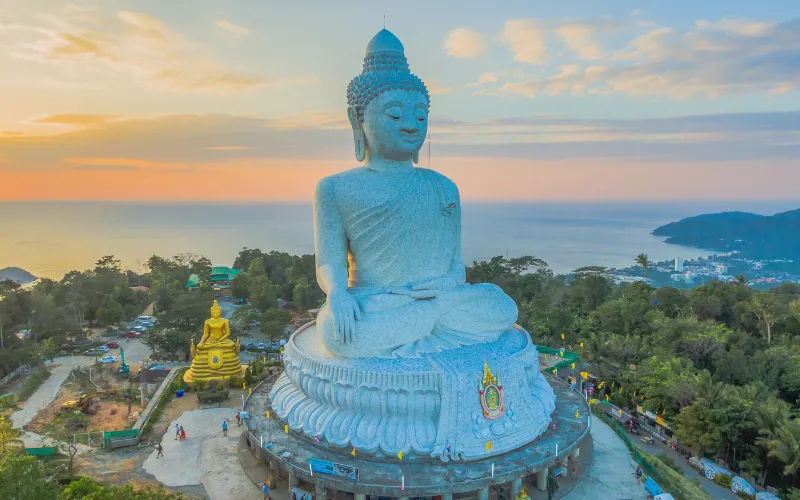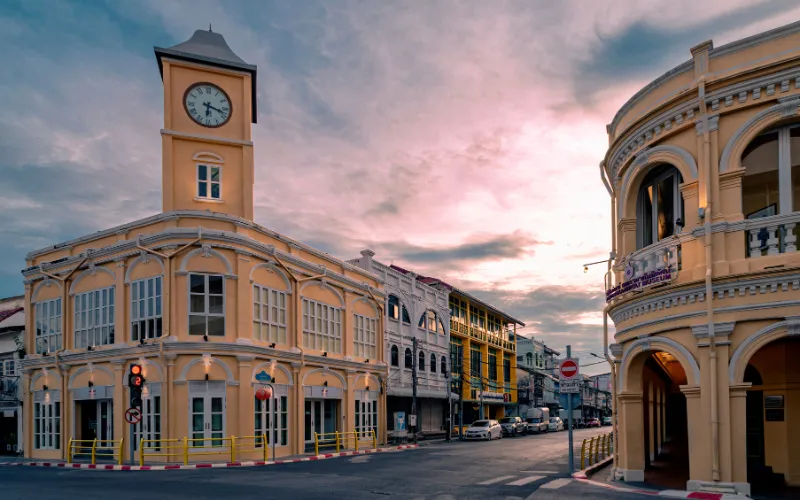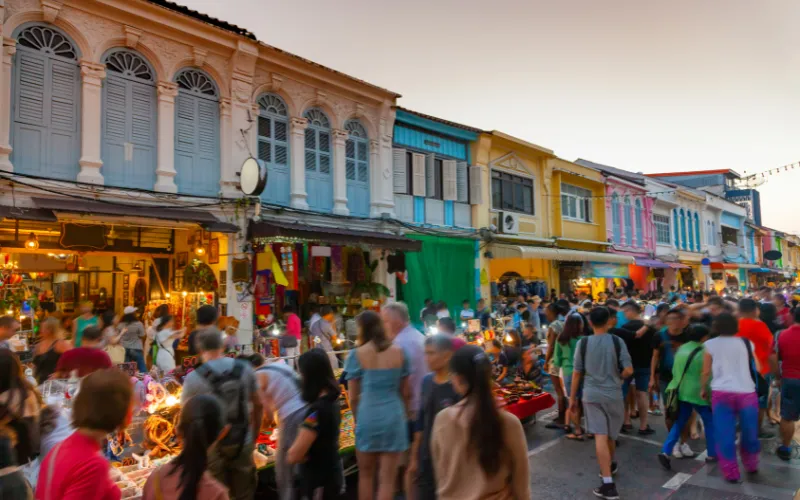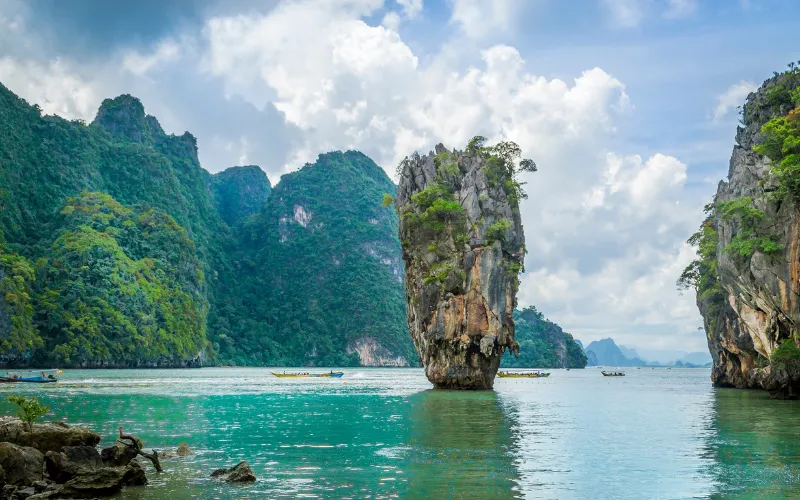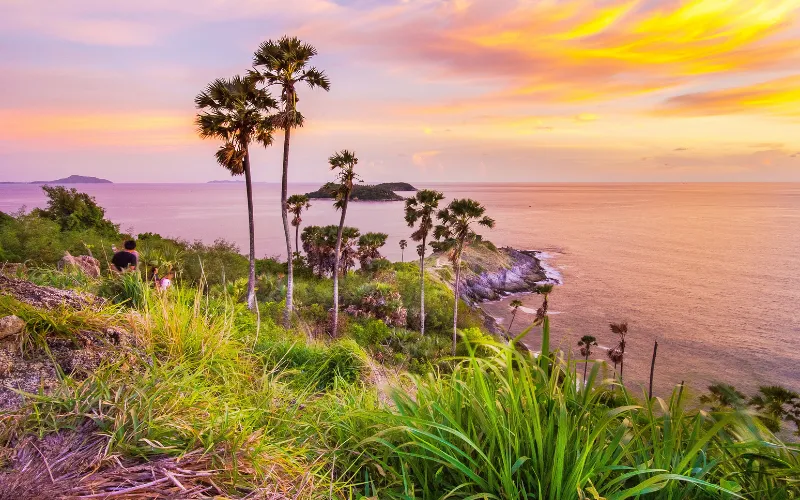PHUKET Travel Guide
Phuket, Thailand’s crown jewel in the Andaman Sea, is where barefoot luxury meets tropical elegance. Famed for its powder-soft beaches, crystal-clear waters, and five-star resorts tucked away in lush hillsides, this island is a haven for discerning travelers. From private yacht charters to hidden beach clubs, world-class golf to rejuvenating wellness sanctuaries, every moment in Phuket is tailored for indulgence. Whether you’re savoring fresh-caught seafood at a cliffside restaurant or exploring the island’s rich cultural heritage with a private guide, Phuket promises a seamless blend of relaxation, sophistication, and unforgettable experiences.
Phuket is where tropical beauty meets refined luxury — an island escape where every experience is crafted for those who seek the extraordinary.
Phuket’s story is one of trade, culture, and resilience. Once a thriving port along ancient maritime routes, the island welcomed merchants from Europe, India, and China, shaping its unique blend of cultural influences. In the 18th century, Phuket gained national pride when two local heroines led the defense against Burmese invaders — a defining moment in Thai history. Later, the island prospered through its booming tin mining industry, drawing settlers and wealth that left a lasting architectural legacy. Today, echoes of this rich past live on in Phuket’s Old Town, where Sino-Portuguese mansions and vibrant street life offer a charming contrast to the island’s modern luxury.
Private Beaches & Luxury Resorts
Discover secluded stretches of sand and world-class resorts offering total privacy and premium service.
Phang Nga Bay
Cruise through emerald waters and dramatic limestone cliffs on a private yacht or longtail boat.
Old Town Charm
Stroll through Phuket Old Town, with its colorful Sino-Portuguese architecture, chic cafés, and lively night markets.
Island-Hopping Adventures
Explore the nearby Phi Phi Islands, Similan Islands, or Coral Island for snorkeling, diving, and sun-soaked escapes.
Wellness & Spa Retreats
Rejuvenate with bespoke wellness programs, yoga by the sea, and award-winning Thai spas.
Fine Dining & Sunset Views
Dine at elegant cliffside restaurants and beachfront venues that blend gourmet cuisine with unforgettable views.
Cultural Encounters
Visit ornate temples, take part in a traditional cooking class, or enjoy a private blessing from a local monk.
Phuket is easily accessible via Phuket International Airport (HKT), which welcomes direct flights from major cities across Asia, Europe, the Middle East, and Australia. For those arriving from Bangkok or other parts of Thailand, daily domestic flights, luxury transfers, and private charters make getting to the island seamless. Yacht arrivals are also possible, with Phuket serving as a gateway to the Andaman Sea for luxury cruises and private vessels.
Getting around Phuket is effortless and flexible. Private chauffeured vehicles are the most comfortable and reliable option for exploring the island at your own pace. For shorter distances, luxury vans, tuk-tuks, and taxis are readily available. Many upscale resorts also offer in-house transport services and curated day trips. For those seeking freedom on the road, rental cars and scooters can be arranged — though for a truly carefree experience, a private driver is always recommended.
Interested in festivals? read more about festivals in Phuket and around Thailand.
Journey Examples
OTHER REGIONS
Thailand / Essential Information
- Visas and border crossings
- Country facts and figures
- Language and culture
- Security
- Money
- Mobiles and the Internet
- Travel to and around Thailand
- And more
